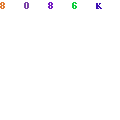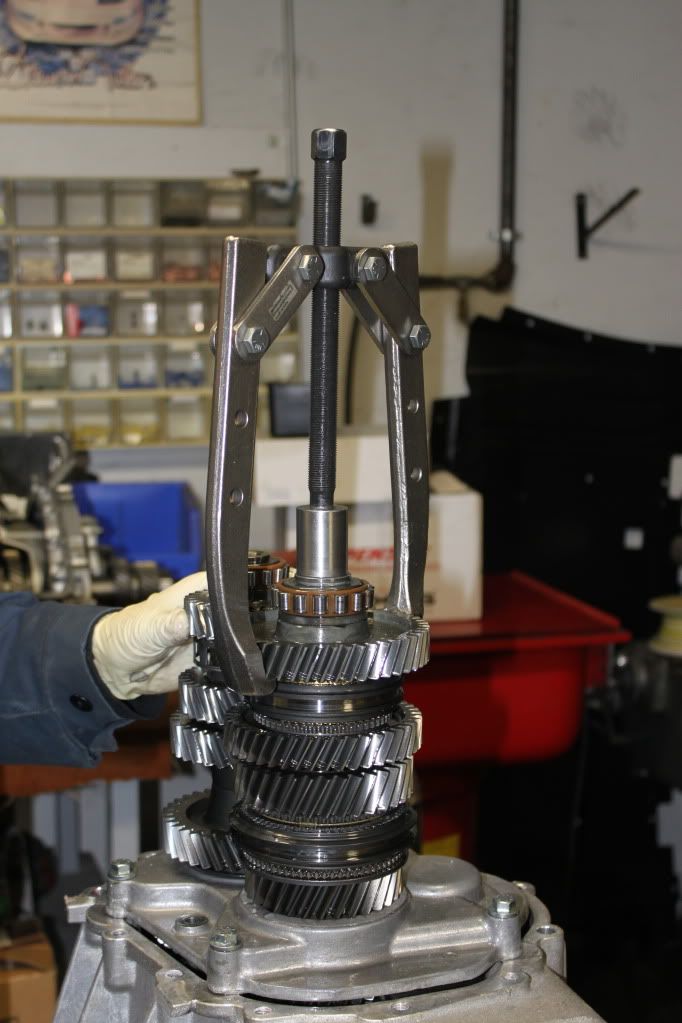You are using an out of date browser. It may not display this or other websites correctly.
You should upgrade or use an alternative browser.
You should upgrade or use an alternative browser.
Design differences between street and race gearboxes
- Thread starter croc
- Start date
Admittedly gearboxes aren't my best area, so let me hazard a guess.
I'd say it's because of the use-specific design. In a race gearbox it might be necessary to change ratios often or quickly (I can envision gears being changed during the night for lengthy multiple-day races), whereas in a street box the idea would be to choose the ratios that might be best for your intended use and then design the box for longevity. An additional factor might well be the abuse you would expect a gearbox to receive, most lilely necessitating frequent teardowns for replacements/rebuilds.
I'll be interested in seeing what those who are more knowledgable have to say!
Doug
I'd say it's because of the use-specific design. In a race gearbox it might be necessary to change ratios often or quickly (I can envision gears being changed during the night for lengthy multiple-day races), whereas in a street box the idea would be to choose the ratios that might be best for your intended use and then design the box for longevity. An additional factor might well be the abuse you would expect a gearbox to receive, most lilely necessitating frequent teardowns for replacements/rebuilds.
I'll be interested in seeing what those who are more knowledgable have to say!
Doug
Yes, basically its because they are designed that way to facilitate quick ratio changes.
I remember at the old Wigram aerodrome cicuit with a long back straight, and with respect particularly to Formula Ford, top speed was often influenced by the prevailing wind which could be variable and intermittent. The serious championship contenders had the back off their trans (Hewland Mk8 or 9) and the gear stack out and only made a final decision as to which ratio to use about ten minutes before being due on the dummy grid. Usually the ratio change was only one tooth up or down but it was critical.
I remember at the old Wigram aerodrome cicuit with a long back straight, and with respect particularly to Formula Ford, top speed was often influenced by the prevailing wind which could be variable and intermittent. The serious championship contenders had the back off their trans (Hewland Mk8 or 9) and the gear stack out and only made a final decision as to which ratio to use about ten minutes before being due on the dummy grid. Usually the ratio change was only one tooth up or down but it was critical.
Ditto the above - ease of changing ratios on a race car dictates a configuration that allows for changing ratios at the track (without a large press). Also, related, race car boxes tend to use straight cut gears, which don't create much in the way of lateral forces, thus while the bearings on a shaft still need to be press fit, the gears themselves don't need to be located with large forces.
Press fits generally will live longer under street conditions, where loads vary on a second-to-second basis. If a gear is allowed to shift on the shaft because of clearances, it will "slam" into shaft every time the load goes from zero to plus or minus. Things wear faster that way. Racing loads are much more consistent, and the time scales are much shorter, so that clearances are less of a factor.
In addition, even small clearances can generate extra noise, and the spiral-cut gear forces can do some serious pushing and pulling. Straight-cut gears are so noisy that it's all moot.
In addition, even small clearances can generate extra noise, and the spiral-cut gear forces can do some serious pushing and pulling. Straight-cut gears are so noisy that it's all moot.
Interesting question. Renault gearboxes pre NG series required press on gears. NG series gears, bearings, synchros, etc. slide on splines and are retained with circlips. I would generally agree that street boxes are not disassembled regularly therefore the press on design, but it isn't necessary.
Thanks for the replies.
I have worked on a race gearbox (Hewland LD200) years ago but never on a street gearbox, which is why I was asking as I was a bit baffled by those tools.
I’ve just been taking a look at Albins photos. The slider hubs are much narrower than Hewland’s. IIRC, in Hewlands, the bearings and gears are mounted on the ends of slider hubs rather than directly on the shafts. The hubs themselves slide on the grooved shaft (pinion) and the shaft is grooved all the way, so the whole gear stack could be removed quickly. The dog change Albins (930) kit doesn’t have that. Doesn’t matter anyway – I was just saying. And the Hewland bearings weren’t even press fit. I tried to search for a pic of the hub but to no avail unfortunately.
I have worked on a race gearbox (Hewland LD200) years ago but never on a street gearbox, which is why I was asking as I was a bit baffled by those tools.
I’ve just been taking a look at Albins photos. The slider hubs are much narrower than Hewland’s. IIRC, in Hewlands, the bearings and gears are mounted on the ends of slider hubs rather than directly on the shafts. The hubs themselves slide on the grooved shaft (pinion) and the shaft is grooved all the way, so the whole gear stack could be removed quickly. The dog change Albins (930) kit doesn’t have that. Doesn’t matter anyway – I was just saying. And the Hewland bearings weren’t even press fit. I tried to search for a pic of the hub but to no avail unfortunately.
Last edited:
Any idea why Renault changed the design from press-on to splines with circlips? Just curious.Interesting question. Renault gearboxes pre NG series required press on gears. NG series gears, bearings, synchros, etc. slide on splines and are retained with circlips. I would generally agree that street boxes are not disassembled regularly therefore the press on design, but it isn't necessary.
Have you driven both? Any noticeable differences in terms of noise?
OK, here's a pic:

The hub is item # 58, and the bearing is #55.[ The bearings are retained by items # 52, 59 and 62. Pretty cool, eh?]
#'s 52,59,&62 appear to be just spacers/thrust washers,the gear / brgs run on the dog shifter hubs. NUT # 8 is what holds the whole assy together on the shaft, I sense that your on a rather steep learning curve.
Last edited:
Any idea why Renault changed the design from press-on to splines with circlips? Just curious.
Have you driven both? Any noticeable differences in terms of noise?
Yes I've had both a 336 box, an NG1 box, and an NG3 box in my Lotus Europa. No difference in noise. The NG boxes can handle considerably more hp mainly due to a larger input shaft. Don't know what Renault did with later UN boxes.
Yes, but regarding street gearboxes, what is the reason behind using press fit gears on the shafts?
Race gearboxes don't have longevity in mind (except to finish the race) and are often rebuilt after every season or every few races.
Street gearboxes however longevity is a crucial design aspect.
Gears are typically heat shrunk or pressed onto shafts for street gearboxes because a loose fit on splines will eventually wear the splines out. Back and forth motion of the gear relative to the shaft will slowly increase tolerances on the gear and shaft splines, and this could lead to the gear walking itself off the shaft or eventual spline failure.
This occurred on a number of Dodge diesel 5th gears, excessive tolerance on the 5th gear and splined shaft caused the gear to back down the shaft and damage other things as it moved. The repair for this gearbox is to replace the shaft and gear with one that has tighter tolerances, and some have even welded the gear to the shaft.
Race boxes also have different profiled gears are typically straight cut and very noisy something not desirable for the street.
RACING gearboxes are straight cutted ( very noisly ) with dogs ( very difficult to drive in the traffic ), with very high differential locking factors and generally they are calculated for about 30-35 hours of life ( structural life, because the dog life depends only from the driver ), the centre distance of the shafts is generally bigger than the street boxes and they are designed for easy ratio changes. If there is an oil pump it is driven by the secondary shaft ( increasing the flow together with the speed )
STREET gearboxes are helical cutted ( for NVH purposes and resistance purposes ), with synchromesh ( for easy shiftings ), with a low lockage of the diff in traction ( to avoid power oversteerings ) and a medium lockage in coast ( to avoid lift off oversteerings ). The life of a street gearbox is generally equal to the vehhicle targeted life. By having an oil pump, it is driven by the primary shaft for constant lubrication also while standing in neutral )
Regards
STREET gearboxes are helical cutted ( for NVH purposes and resistance purposes ), with synchromesh ( for easy shiftings ), with a low lockage of the diff in traction ( to avoid power oversteerings ) and a medium lockage in coast ( to avoid lift off oversteerings ). The life of a street gearbox is generally equal to the vehhicle targeted life. By having an oil pump, it is driven by the primary shaft for constant lubrication also while standing in neutral )
Regards
Similar threads
- Replies
- 98
- Views
- 16K
- Locked
- Replies
- 21
- Views
- 5K
- Replies
- 2
- Views
- 2K
- Replies
- 0
- Views
- 2K


